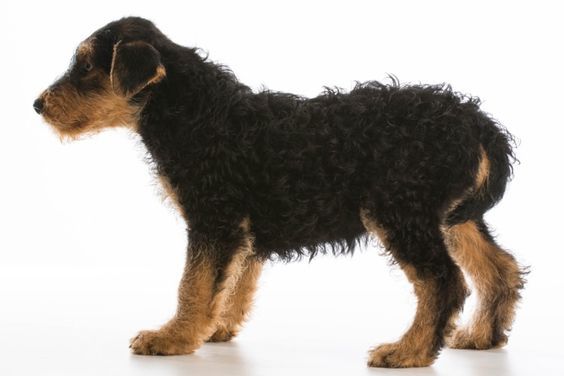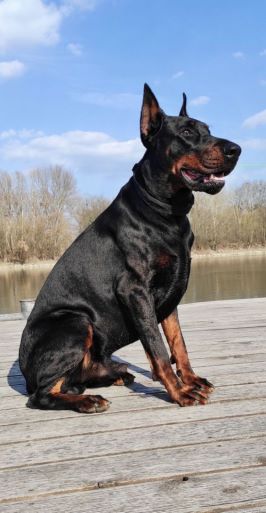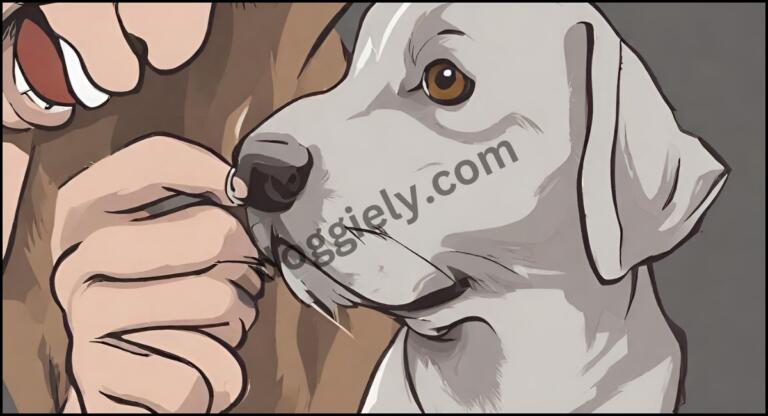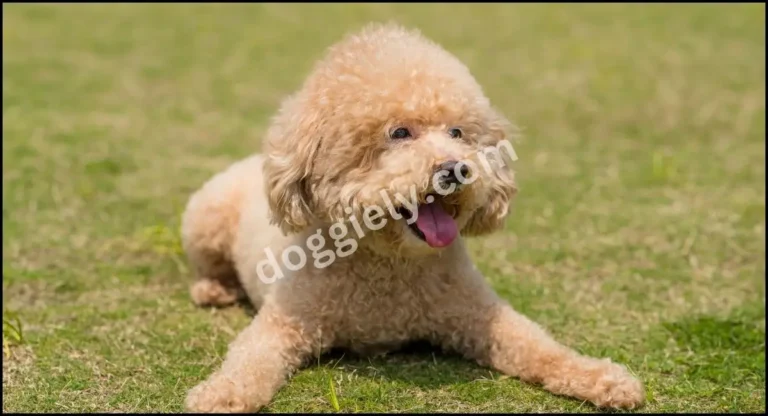why do dogs tuck their tails? 6 major reasons you shOULD know

As a dedicated dog parent, the question “why do dogs tuck their tails?” became more than a curiosity when I noticed my rescue beagle, Sammy, displaying this behavior. At first, it seemed a cute quirk, but as I delved into the nuances of canine body language, I realized it was a window into his emotional state. Sammy would tuck his tail during thunderstorms, a clear sign of his fear. It also happened when we navigated crowded parks, signaling his anxiety amidst the chaos. This tail-tucking was his way of communicating discomfort, an invaluable insight for me to address his needs better. It became a cue for providing reassurance or removing him from stressful situations. Understanding this subtle language deepened our bond and highlighted the importance of being attuned to such non-verbal cues for his well-being.
This article delves into the reasons behind why dogs might adopt this specific tail position and offers guidance on how to respond if your dog frequently exhibits this behavior.
Understanding the Reasons Behind Tail-Tucking in Dogs
Recognizing the reasons behind tail-tucking in dogs allows pet owners to respond appropriately to their pets’ needs, whether that involves providing comfort, removing stressors, or seeking veterinary care for health issues. By observing this and other body language cues, owners can enhance their communication with their canine companions, ensuring their well-being and fostering a stronger bond.
Why Do Dogs Tuck Their Tails?
Tail-tucking in dogs is a behavior that often sparks curiosity and concern among pet owners. This gesture, characterized by a dog tucking its tail between its legs, can be a communication tool expressing a variety of emotions and physical states. Understanding the reasons behind this behavior is crucial for pet owners to address their dogs’ needs effectively. Here are some of the primary reasons why dogs might tuck their tails:
1. Fear and Anxiety
One of the most common reasons dogs tuck their tails is due to fear or anxiety. This behavior is a natural response to situations that make the dog feel threatened or uncomfortable. Fear can be triggered by loud noises, such as thunderstorms or fireworks, unfamiliar people or animals, new environments, or specific situations that have previously led to negative experiences. Tail-tucking is a dog’s way of making itself appear smaller and less threatening, which is a defensive mechanism aimed at avoiding conflict.
2. Submission and Appeasement
Tail-tucking can also be a sign of submission or appeasement in social interactions with other dogs or humans. In the wild, wolves and other canids use this posture to communicate deference to more dominant members of the pack. In domestic dogs, this behavior indicates that they do not wish to challenge or threaten the other party. It’s a dog’s way of saying, “I come in peace” or “I acknowledge your dominance,” aiming to prevent aggression and maintain social harmony.
3. Insecurity or Discomfort
Dogs might also tuck their tails when they feel insecure or uncomfortable in a particular situation. This could be due to being in a new or overwhelming environment, facing an uncertain situation, or not knowing how to react in a specific context. Tail-tucking serves as an indicator of a dog’s unease and desire for protection or reassurance from their owners.
4. Health Issues or Pain
Physical discomfort or pain is another significant reason behind tail-tucking. Tail injuries, such as sprains, fractures, or even issues with the anal glands, can cause a dog to tuck its tail to alleviate or communicate discomfort. This behavior may be accompanied by other signs of distress, such as whimpering, licking the affected area, or avoiding touch. It’s important for pet owners to observe these signs and consult a veterinarian to address any health concerns promptly.
5. Avoidance of Unwanted Attention
In the context of mating or social interactions, female dogs may tuck their tails to signal disinterest or to protect themselves from unwanted male attention. Similarly, both male and female dogs might use this posture to avoid confrontations or unwelcome social advances from other dogs.
6. Environmental Stress
Certain environmental factors, such as extreme temperatures, loud environments, or confinement in a small space, can lead to stress and discomfort in dogs, resulting in tail-tucking. This behavior can be a dog’s way of coping with stressors and seeking comfort or escape from the distressing situation.
Read Also: Puppy Breath Smells Like Fish? (Common Reasons and Prevention)
When to Worry About Tail Tucking in Your Dog

Tail tucking in dogs is a behavior that often catches the attention of pet owners, signaling various emotional states and intentions. While it’s a common gesture seen in the canine world, understanding when this action warrants concern is crucial for the well-being of your furry friend.
Normal Instances of Tail Tucking
In many cases, a dog tucking its tail is a normal and temporary response to certain situations. It can be a sign of submission or fear in the presence of a more dominant animal or unfamiliar humans. Dogs might also tuck their tails during loud noises (such as thunderstorms or fireworks), as a sign of anxiety or fear. Observing this behavior during such instances is typical and usually not a cause for alarm.
When to Be Concerned
However, there are times when tail tucking can indicate a deeper issue:
- Prolonged Fear or Anxiety: If your dog consistently tucks its tail and displays other signs of fear or anxiety (like hiding, whining, or shaking) without apparent triggers, it may be experiencing chronic stress or anxiety. This condition could require intervention from a veterinarian or an animal behaviorist.
- Physical Pain: Sometimes, tail tucking can be a sign of physical discomfort or pain. If your dog suddenly starts keeping its tail down and shows signs of pain when you try to lift it or if it’s accompanied by a lack of mobility, it could be suffering from an injury or a condition like anal gland issues, tail injury, or spinal problems.
- Behavioral Changes: A drastic change in your dog’s tail posture, especially if it’s combined with other behavioral changes (such as aggression, lethargy, or loss of appetite), warrants a vet visit. Such signs could indicate an underlying health issue that needs addressing.
Read Also: Why Does My Dog Steals My Clothes?
How to Respond When Your Dog Tucks Their Tail
When your dog tucks their tail, it’s a clear sign they’re feeling some sort of discomfort, anxiety, or fear. As a pet owner, recognizing and appropriately responding to this behavior can help your dog feel safer and more secure. Here’s how you can respond effectively:

1. Stay Calm and Assess the Situation
Your first step should be to calmly assess the situation to understand why your dog might be feeling anxious or scared. Look for immediate causes, such as loud noises, unfamiliar people, or changes in the environment. Your calm demeanor can also help soothe your dog, as they often pick up on and mirror our emotions.
2. Provide a Safe Space
If your dog is frightened or stressed, giving them access to a safe, quiet space where they can retreat can be incredibly comforting. This could be a crate (if they are crate-trained), a quiet room, or a secluded spot they’ve chosen before. The aim is to allow them a place to decompress and feel secure.
3. Avoid Punishment
Reacting negatively to your dog’s fear or anxiety by scolding or punishment can exacerbate their stress, leading to more profound behavioral issues. Always use positive reinforcement and understanding when dealing with fearful behaviors.
4. Offer Comfort, But Don’t Force It
Some dogs seek comfort from their owners when they’re scared, while others prefer to be alone. Offer gentle pets and soothing words, but if your dog prefers to be alone, respect their need for space. Forcing interaction can increase their stress.
5. Identify and Remove Stressors When Possible
If it’s possible to identify and remove the stressor, do so. However, if the stressor is something unavoidable (like thunderstorms), finding ways to help your dog cope, such as playing white noise to drown out scary sounds or using anxiety aids like weighted vests, can be beneficial.
6. Desensitization and Counterconditioning
For fears that can’t be easily removed, consider working on desensitization and counterconditioning exercises. These techniques gradually expose your dog to the source of their fear in a controlled, minimal way, paired with positive reinforcement to change their association with the fear stimulus.
7. Seek Professional Help
If tail tucking is frequent or seems to be related to a deeper issue such as chronic anxiety, pain, or a behavioral problem, consulting with a veterinarian or a certified animal behaviorist is crucial. They can provide tailored advice, potential medical interventions, or structured behavioral modification plans.
Conclusion
The question, “Why do dogs put their tails between their legs?” uncovers a complex web of emotional and physical reasons ranging from fear and submission to injury. As dog owners, understanding and responding to these signals can help in providing a safe and nurturing environment for our canine companions. Early intervention and care are key in addressing any issues related to this behavior.
Read Also: Herbs and Spices that are Good for Dogs
Read Also: 8 Best Dog Beds For Hairy Dogs
faqs
Why does a dog keep its tail tucked?
Dogs keep their tails tucked as a sign of fear, submission, or discomfort, indicating they feel threatened or uneasy in their environment.
Why do older dogs tuck their tail?
Older dogs may tuck their tail due to pain, fear, insecurity, or as a sign of submission, often related to age-related vulnerabilities or health issues.
Why do dogs hide their tails when scared?
Dogs hide their tails when scared as a natural response to fear, signaling submission or the desire to avoid confrontation or threat.
Why is my dog tucking his tail and crying?
If a dog is tucking his tail and crying, it often indicates pain, fear, or discomfort, requiring attention to identify and address the underlying cause.
Do dogs tuck tail when sad?
Dogs may tuck their tail when sad, reflecting their emotional state, signaling discomfort, unease, or submission in response to their environment or interactions.
Do dogs tuck tail when constipated?
Dogs tuck their tail when constipated as a sign of discomfort or pain, indicating a physical issue that may require veterinary attention.
Does tucked tail mean pain?
A tucked tail can mean pain in dogs, serving as a non-verbal cue of discomfort or distress, often necessitating a closer examination to determine the cause.
What does tucked tail mean?
A tucked tail in dogs generally signifies fear, submission, pain, or discomfort, serving as a key indicator of the dog’s emotional or physical well-being.





